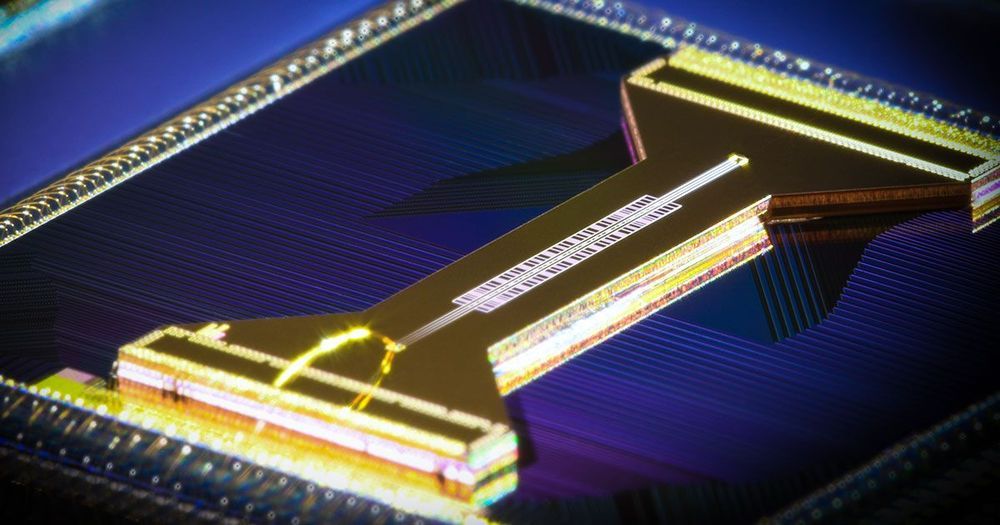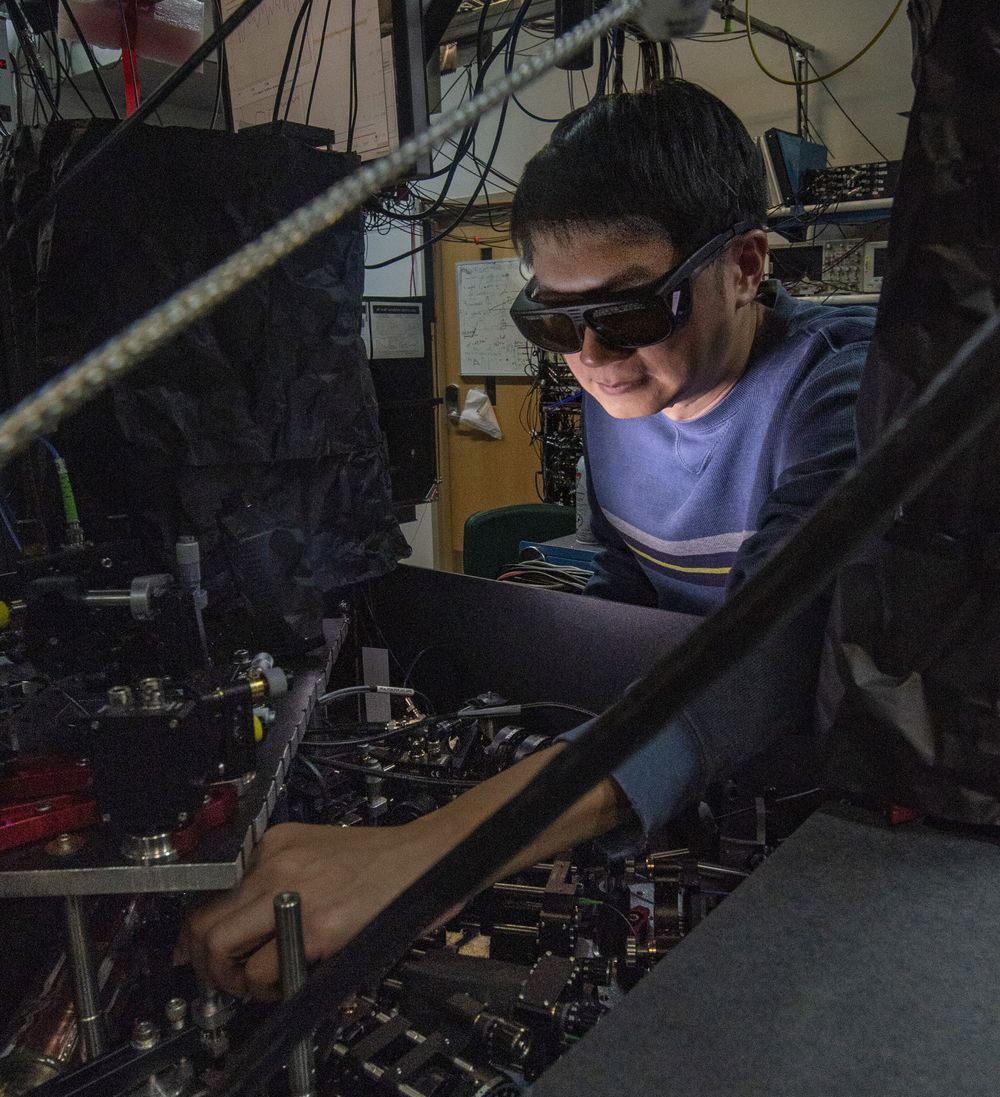Superior qubits key to rapid increase in power.


Circa 2019
Cerebral palsy is a condition that results from injuries or abnormalities of the brain, usually in the womb but occurring any time during 2 years after birth. It affects brain and nervous system functions such as thinking, seeing, hearing, learning and movement.
Common causes are hypoxia (low oxygen levels), head injury, maternal infections such as rubella, brain bleeding, brain infection, and severe jaundice. Types of CP include: ataxic, hypotonic, spastic, dyskinetic, and mixed.
Mesenchymal stem cells from umbilical cord are considered to be universal donor cells because they are not immediately recognized as foreign. The cells home to damaged tissue and are known to secrete molecules called trophic factors.

Physicists at the National Institute of Standards and Technology have boosted their control of the fundamental properties of molecules at the quantum level by linking or “entangling” an electrically charged atom and an electrically charged molecule, showcasing a way to build hybrid quantum information systems that could manipulate, store and transmit different forms of data.
Described in a Nature paper posted online May 20, the new NIST method could help build large-scale quantum computers and networks by connecting quantum bits (qubits) based on otherwise incompatible hardware designs and operating frequencies. Mixed-platform quantum systems could offer versatility like that of conventional computer systems, which, for example, can exchange data among an electronic processor, an optical disc, and a magnetic hard drive.
The NIST experiments successfully entangled the properties of an electron in the atomic ion with the rotational states of the molecule so that measurements of one particle would control the properties of the other. The research builds on the same group’s 2017 demonstration of quantum control of a molecule, which extended techniques long used to manipulate atoms to the more complicated and potentially more fruitful arena offered by molecules, composed of multiple atoms bonded together.
Here’s one we missed from several months ago: Brazilian eVTOL innovator EmbraerX put forth a fun video showing how a multi-mode 3D transport system might work, with an eVTOL air taxi carrying a detachable glassed-over cabin that it delivers straight onto a self-driving car chassis.
The coming new breed of eVTOL air taxis are nearly all, at this stage, designed to work as part of a multi-mode transport scheme. The flying taxis themselves will travel from skyport to skyport, meaning you’ll need other means to get yourself to the takeoff point and something else again at the other end for the last mile. It’s simply not practical to expect eVTOLs to drop you off right at your destination.
Companies like Uber are salivating at the thought of being able to offer the whole service as a single sale, co-ordinating a car at each end to minimize travel time, but that starts looking like a bit of an annoyance when you consider the hope is that people will use these things for the daily commute. Four taxis and two eVTOLs every day is a pain.

After biomedical scientists demonstrated that they could make dangerous viruses like influenza even more dangerous, the National Institutes of Health (NIH) implemented a three-year moratorium on funding such research. But a couple of months ago, in December, the moratorium was lifted, and a tight set of rules were put in its place, such as a mandate for oversight panels.
The prospect of engineering a deadly pandemic virus in a laboratory suggests that only a fool would wish away government regulation entirely.
However, as a whole, regulation has done more harm than good in the arena of scientific innovation. The reason is that the sort of person who thinks like a bureaucratic regulator isn’t the sort of person who thinks like a scientist. The sad fact of the matter is that those most interested in the regulatory process tend to be motivated by politics and ideology rather than scientific inquiry and technological progress.

Roam Robotics is making robotic exoskeletons that are lightweight and affordable so that they can become a new category of consumer electronics. Traditional robotic exoskeletons can weigh between 30 to 60 pounds because they rely on high precision mechanical systems. They are big and bulky and cost as much as a luxury car, which significantly limits their usefulness and availability. Roam’s new robotic exoskeletons are so portable and inexpensive that they could quickly become a commonplace part of modern life.

To many developers, quantum computing may still feel like a futuristic technology shrouded in mystery and surrounded by hype. It’s some mystic dance of 1s and 0s that will enable some calculations in mere hours that today would take the lifetime of the universe to compute. It’s somehow related to a cat that may or may not be dead in a box.
The question we hear most often from developers is how do you make sense of what’s real and get started?
Over the last year, we’ve been working with you, the pioneering community of quantum developers, to understand what all developers will need on the path to scalable quantum computing. You’ve told us that you want to learn more about where quantum could impact your business today, to have easier ways to start writing quantum code, and to run applications against a range of quantum and classical hardware.


As technology has developed over the last few years, the size of wind turbines has increased.
Last December, for example, Dutch utility Eneco started to purchase power produced by the prototype of GE Renewable Energy’s Haliade-X 12 MW wind turbine. That turbine has a capacity of 12 MW, a height of 260 meters and a blade length of 107 meters.
The announcement of Siemens Gamesa’s new turbine plans comes against the backdrop of the coronavirus pandemic, which is impacting renewable energy companies around the world.

U.S. Special Operations Command will wait for the Army’s 6.8mm rifle and automatic rifle, but it’s moving forward to adopt a new sniper support weapon chambered in the longer-range 6.5mm Creedmoor round.
If all goes well with the Army’s 6.8mm Next Generation Squad Weapon (NGSW) effort, special-ops weapons officials plan to field both variants to units such as the 75th Ranger Regiment after the service begins its planned fielding in fiscal 2023.